- Home
- Ian Buruma
The Missionary and the Libertine
The Missionary and the Libertine Read online
Acclaim for Ian Buruma’s
THE MISSIONARY AND THE LIBERTINE
“A fluent and enjoyable book.”
—The Economist
“The wonderful thing about Buruma, revealed in these essays, is how he’s kept one foot in criticism and one foot in journalism.… Buruma is engaged. And it’s engaging.”
—Los Angeles Times
“The Missionary and the Libertine reinforces [Buruma’s] reputation as a modern Orientalist with an original voice.”
—The New York Times Book Review
“Complementing the generous scope of the author’s imagination is Buruma’s humane and literate voice, which illuminates the cultural (and other) contrasts between East and West while always engaging the reader. Informative and entertaining.”
—Kirkus Reviews
“This is a book that should hit home in all sorts of ways.”
—Chicago Tribune
“Buruma is a subtle commentator and a smooth stylist with an often striking turn of phrase.… Like the best travel writers, he has a sharp eye for detail—except that, more an intellectual cartographer than an explorer of geographies, he trains his attention on the cultural signposts and psychological landscapes of the countries he visits.… Less a manual of exotic decadence than an erudite anthology of cross-cultural encounter in general.”
—Atlantic Unbound
Ian Buruma
THE MISSIONARY
AND THE LIBERTINE
Ian Buruma was educated in Holland and Japan. He has spent many years in Asia, which he has written about in God’s Dust and Behind the Mask. Buruma is a frequent contributor to The New York Review of Books, The New Republic, and The New York Times Magazine.
ALSO BY IAN BURUMA
NONFICTION
Anglomania: A European Love Affair
Behind the Mask: On Sexual Demons, Sacred Mothers, Transvestites,
Gangster Drifters and Other Japanese Cultural Heroes
God’s Dust: A Modern Asian Journey
The Wages of Guilt: Memories of War in Germany and Japan
FICTION
Playing the Game
FIRST VINTAGE BOOKS EDITION, AUGUST 2001
Copyright © 1996, 2000 by Ian Buruma
All rights reserved under International and Pan-American Copyright Conventions. Published in the United States by Vintage Books, a division of Random House, Inc., New York, and simultaneously in Canada by Random House of Canada Limited, Toronto. Originally published in Great Britain by Faber and Faber Limited in 1996, and in hardcover in the United States by Random House, Inc., New York, in 2000.
Vintage and colophon are registered trademarks of Random House, Inc.
The Library of Congress has cataloged the Random House edition as follows:
Buruma, Ian.
The missionary and the libertine: love and war in East and West/Ian Buruma.
p. cm.
Includes bibliographical references.
eISBN: 978-0-307-82897-2
1. Social change—Asia—Cross-cultural studies.
2. International relations and culture—Asia. 3. East and West. I. Title.
HN652.5.B87 2000 303.4′095—dc21 99-53744
Author photograph © Caroline Forbes
www.vintagebooks.com
v3.1
For Donald Richie
ACKNOWLEDGMENTS
I owe thanks to one person in particular, apart from my wife, and that is the original editor of most of the material in this book: Robert Silvers of The New York Review of Books. Bob must have popped up over the years in more acknowledgments than any editor in the English-speaking world. That is because there is no editor like Bob. I shall not bother to rehearse the already well-rehearsed legends: the phone calls at midnight in Pyongyang to discuss the placement of a semicolon, and so forth. Suffice it to say that Bob—and his coeditor Barbara Epstein—has that particular gift that separates good from great editors, the gift to inspire the desire to please. Most writers like to have an ideal reader in mind. Bob is that ideal reader. He makes you want to write for him. When he says, “On we go to the next adventure,” only seconds after the last piece has gone through the final stage of editing, on one goes, with the enthusiasm of a puppy running after a stick. On I have gone for the last ten years, in Hong Kong, Tokyo, Delhi, Seoul, Singapore, Berlin and London. This book is a record of that journey.
CONTENTS
Cover
About the Author
Other Books by This Author
Title Page
Copyright
Acknowledgments
Introduction: The Missionary and the Libertine
PART I
Mishima Yukio: The Suicidal Dandy
Oshima Nagisa: Japanese Sex
Tanizaki Junichiro: The Art of Cruelty
Yoshimoto Banana: Pink Dreams
Edward Seidensticker: An American in Tokyo
Wilfred Thesiger: Wilfred of Arabia
Baden-Powell: Boys Will Be Boys
Louis Couperus: The Eurasians of the Dutch East Indies
PART II
Satyajit Ray: The Last Bengali Renaissance Man
Nirad C. Chaudhuri: Citizen of the British Empire
Mircea Eliade: Bengal Nights
V. S. Naipaul’s India
Bhutto’s Pakistan
St. Cory and the Evil Rose
The Bartered Bride
The Seoul Olympics
The Last Days of Hong Kong
PART III
Ghosts of Pearl Harbor
The War over the Bomb
We Japanese
Samurai of Swat
Américainerie
Wake Up, America
Looking East
The Nanny State of Asia
Bibliography
INTRODUCTION
The Missionary and the Libertine
I first saw the East in 1971. The East is of course a vague notion, for it is imaginary as much as geographical or historical. I am concerned here with the imaginary East. In 1971 a Japanese theater group called the Tenjo Sajiki came to Amsterdam, where I was living at the time. The group was led by the writer/director Terayama Shuji. He had hawkish eyes and short-cropped hair, brushed forward like Napoleon’s, and he wore high-heeled ladies’ slippers. The Tenjo Sajiki was playing at the Mickery Theater.
Groups from all over the world performed at the Mickery. Located in the center of Amsterdam, on a wide street that had once been a canal, the Mickery had become the headquarters of the international avant-garde, a kind of United Nations of world theater. I don’t know whether it was due to the genius of its owner, a burly bald-headed man called Ritsaern ten Cate, or to the spirit of the time, but the Mickery was where the action was. In 1971 the Mickery audience was ready for anything.
Terayama’s new play was called Opium War. It had been raining on the day I went to see it. The streets were glistening in the moonlight, and misty drizzle formed yellow cones under the old-fashioned street lamps. The Tenjo Sajiki took full advantage of the Mickery; all the rooms were used, as well as the courtyard round the back of the theater. An actor in Chinese costume stood outside, softly strumming a guitar. Another actor, with an evil leer, stood in a corner of the courtyard, stroking the blue-green feathers of a rooster. A girl in a silk dress appeared, beckoning us to come in. She had a candle in her right hand and led us through a long, dark passage, at the head of which I could hear people singing, as well as what sounded vaguely like fairground music: an electric bass guitar and an organ.
Inside was a world I had never seen before. I cannot remember what the story was, or even whether there was a story. We were swept along in Terayama’s play, from room t
o room. Sometimes the rooms were lit, sometimes they were dark. An actor’s face would be revealed quite suddenly by the light of a match, and then disappear. There was a slave market, with naked girls and handsome pimps; there was an opium den, thick with incense and smoke; there was a ritual killing of a chicken. Men were dressed as gorgeous women, and women were dressed as men. In one room a girl in a sailor suit was bent over a chair and was having her bottom spanked in slow motion by a man wearing a top hat. A ventriloquist in bone-white makeup was sticking pins into a replica of himself. There were huge pictures of Japanese comic-book figures on the walls; there were street signs in Chinese and Japanese; there were circus posters of fat ladies, snake charmers and freaks.
Weird rock music and scratchy songs from the 1930s formed a constant musical background to the actors’ words, which nobody understood: the words were pure sound, just as the Chinese characters on the walls were pure design. In the end we found ourselves in one large room, which was like a fantastic brothel, filled with girls, midgets, opium smokers, dandies and drag queens. The music was delirious, the singing mesmerizing. And then, in an instant, it was over: the actors and actresses were gone, the scenery had come crashing down and lay in piles on the floor, the lights came on, and the Mickery Theater was no more than a large, messy warehouse. The smell of incense lingered a bit longer, and my ears were still ringing from the sounds of music and text. Walking home on the wet Amsterdam streets, along the rank-smelling canals, the images danced on in my mind.
Three nights later I went to the Mickery again, and then again. During the days I would drop in at the theater café, where members of Terayama’s troupe hung out between rehearsals. They read comic books and fashion magazines, and played pinball, and discussed the day’s shopping, and cracked jokes in a language I could not understand. I was like a child who has sneaked into the caravan park behind the circus tent, to watch the acrobats and clowns and lion tamers gossiping, cleaning up, eating and drinking, or taking naps. Even without the greasepaint and costumes, Terayama’s performers had lost none of their magical attraction. If this is what Tokyo is like, I thought, I want to join the circus.
I was studying Chinese at the time. But China, still in the grip of the Cultural Revolution, with its model operas and its campaigns against capitalist roaders, was not only grim but so remote as to be almost abstract. Unless you were a Friend of the People, it was difficult to visit China, and the prospect was, in any case, not inviting. China in 1971 was so distant it did not seem of this world, yet it was not exotic. Mao’s China, to me, seemed like an extreme version of something any student of European history could recognize: a state driven by uniformity, orthodoxy, puritanism.
To some people this was part of China’s attraction. Mao’s regime offered the promise of a purer, cleaner, better world, a vision of heaven after purgatory—or was it purgatory before heaven? Maoism was a utopian religion masquerading as politics. China under Mao appeared to its Western supporters in the way imperial China must have appeared to Voltaire, as a rational paradise on earth. China was an idea. Chinese people were statistics—variables in agricultural experiments, mass political campaigns, macroeconomic data. The appeal of China could not be sensual, because the realm of the senses had been demolished. But China did have an aesthetic appeal: to misguided enthusiasts, the Chinese order had the beauty of mathematics.
Japan, on the other hand, as I saw it in Terayama’s theater, was utterly fantastic, yet closer to the world I knew and lived in. The actors wore the same clothes as we did, listened to the same music, smoked the same drugs. But at the same time their world seemed more exotic than the China I read about in the People’s Daily. This was partly because of Terayama’s style: he mixed Western and Japanese imagery in a way that made both West and East look bizarre and marvelous. His Japan was like a great, colorful souk, or like a costume party in which the guests tried on this costume and then that—old, new, Japanese, Chinese, European. They did so playfully, freely, following only the whims of their imagination. Everything in Terayama’s theater was opposed to dogma, orthodoxy and puritanism. He made Japan look sexy.
If Mao’s version of “Asiatic despotism” appealed to religious puritans, Terayama’s Japan was the modern version of a sensual Orient that has attracted libertines and appalled missionaries for centuries. Neither puritanism nor sensuality was ever unique to East or West, yet, on the whole, it is for the latter that Westerners have looked East. There has been a sensual, even erotic, element in encounters—imaginary or real—between East and West since the ancient Greeks. The European idea of the Orient as female, voluptuous, decadent, amoral—in short, as dangerously seductive—long predates the European empires in India and Southeast Asia.
In The Bacchae, Euripides portrays Dionysus as a fearsome Asiatic god. And in The Persians, Aeschylus shows the Orient to be a dangerous place. The gist of the play is that “Rationality is undermined by Eastern excesses, those mysteriously attractive opposites to what seem to be normal values” (Edward Said, Orientalism). About The Bacchae, Said remarks that “The difference separating East and West is symbolized by the sternness with which, at first, Pentheus rejects the hysterical bacchantes.”
Aphrodite was modeled after Astarte, the Whore of Babylon. Even though the Greeks worshiped Aphrodite, she never quite shed her foreign, Asiatic origins; she kept her slightly scandalous reputation as the divine patroness of temple prostitutes, which is why the Church fathers called her a whore, and Emperor Constantine, in an early instance of missionary zeal, smashed her temple at Baalbek and built a church in its stead.
In The Lotus and the Robot, a book about India and Japan, Arthur Koestler describes his first reaction to “Lotusland” (i.e., Japan) as one of “sensuous and sensual delight.” Japan, he writes, has “an atmosphere with an erotic flicker like the crisp sparks from a comb drawn through a woman’s hair—a guilt-free eroticism which Europe has not known since antiquity.”
These are only perceptions, of course, not exact reflections of reality. In fact, Amsterdam, where I saw Terayama’s bacchantes perform, was in many respects more of a Lotusland than Tokyo. It was certainly more “Orientalist,” with its fashion, among young people, for hashish, incense, patchouli oils and Indian frou-frou. Yet Koestler’s first impression of Tokyo was similar to that of many Western travelers, some of whom decided to stay. It is easy to imagine the giddy sense of freedom felt by Englishmen from rainy northern towns, or Americans from God-fearing midwestern plains, when they came to Japan, or Thailand, or Ceylon, or wherever their idea of Arcadia happened to be. Because local restraints did not apply to them, and they were far from home, everything suddenly seemed possible. The American writer Donald Richie arrived in Japan in 1945. The last words of his loving travelogue The Inland Sea are “I don’t care if I never go home.” And he never did.
For centuries the East, like the Mediterranean countries, represented the sunny, pagan, hedonistic alternative to the cold, pinched and dreary climate of the Christian, especially Protestant, West. Many British writers sought permanent or temporary refuge in India, the Middle East, China or Capri. All over Southeast Asia and Japan there are self-made Arcadias, built by European or American exiles from their native puritanism. In Bangkok, Macao or Kobe, they look curiously alike: gorgeously decorated with Asian art and antiques, fenced in by gardens of bamboo, and with handsome young men or (less often) young girls in attendance.
The purest example of an exile in Arcadia I ever came across was actually someone I never met. By the time I became aware of him, he was already dead. I found him in a university library, not long after I first went to Japan as a student, in 1975. The library was closed to Japanese students, because campus radicals had occupied it some years before, but foreign students were allowed in. I found myself browsing through the stacks with another student, an English artist. We soon noticed not only that the selection of English books reflected a very particular taste, but that virtually all the books had belonged to one man. I cannot rem
ember his name—it was something like Edward Postlethwaite. From dates and place names inscribed in his books, it was clear that he had lived in Berlin until 1936, after which he moved to a fishing village a hundred miles south of Tokyo.
Postlethwaite had a taste for such fin-de-siècle curiosities as accounts by obscure countesses of the Oscar Wilde they had known. There were first editions of Aubrey Beardsley, J.-K. Huysmans, and Ronald Firbank. Photographic books of naked German youths, sitting on rocks or on mountaintops, squinting into the sun, abounded. He also liked Greek myths, Nordic legends (a handsome edition of Wagner’s Ring of the Nibelungen) and Japanese folktales (the complete works of Lafcadio Hearn).
But the book that caught my particular attention was not a precious literary curio but a volume of short stories by Somerset Maugham. The reason was Postlethwaite’s scribbling. He had the habit of writing remarks in the margins (“good!”, or, sometimes, “absolute rot!”). He also underlined passages he particularly admired. There was one such passage in a story about a British planter in Malaya. The planter is visited by another Englishman, evidently a rare occasion, for the plantation is in a remote part of the country. The two men are having drinks on the verandah after sundown. The night is silent apart from the odd animal crying out. The visitor asks his host how he can stand the loneliness of his life, without the company of fellow white men. That, says the planter, is precisely why he likes it out there. The sentence was underlined in thick red ink. I tried to imagine Postlethwaite’s house in the Japanese fishing village: the books, the bamboo fence, the young boys.
The sexual attraction of the East is, of course, a complex thing, which cannot be explained only by the attraction of “guilt-free” eroticism to men or women burdened by Christian guilt. Power and domination have much to do with it. The image of the “geisha girl”—submissive, pliable, ready to indulge any fancy—dovetails neatly with the old perception of the East as a passive, feminine receptacle of masculine Occidental vigour. It is surely not for nothing that nineteenth-century French painters of Orientalist themes were fascinated by harems and slave markets. Modern Japanese pornography is dominated (if that’s the right word) by sadomasochism. When Western men—black or white—appear in this material, it is usually as brutal masters. This is for the Japanese market, of course, but the fantasies conform to the Orientalist types.

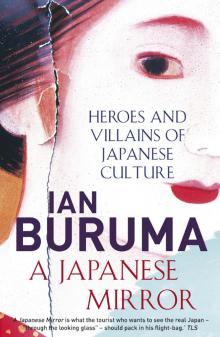 A Japanese Mirror
A Japanese Mirror Taming the Gods
Taming the Gods The China Lover
The China Lover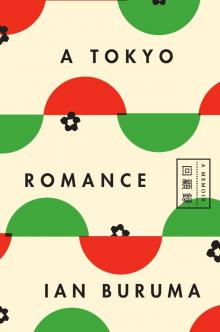 A Tokyo Romance
A Tokyo Romance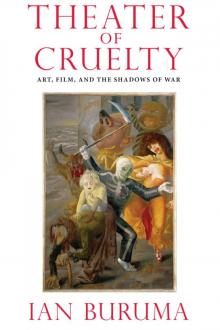 Theater of Cruelty
Theater of Cruelty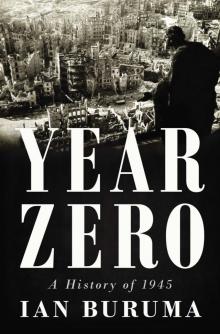 Year Zero
Year Zero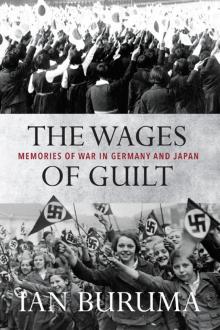 The Wages of Guilt
The Wages of Guilt Murder in Amsterdam
Murder in Amsterdam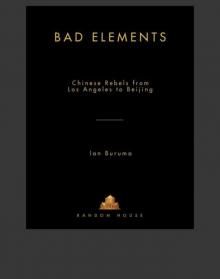 Bad Elements
Bad Elements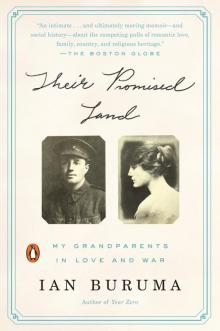 Their Promised Land
Their Promised Land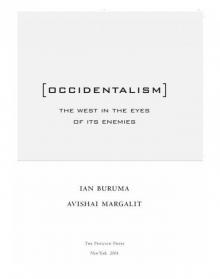 Occidentalism
Occidentalism Anglomania
Anglomania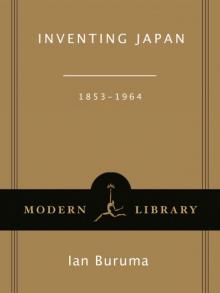 Inventing Japan: 1853-1964 (Modern Library Chronicles)
Inventing Japan: 1853-1964 (Modern Library Chronicles) The Missionary and the Libertine
The Missionary and the Libertine